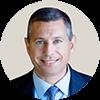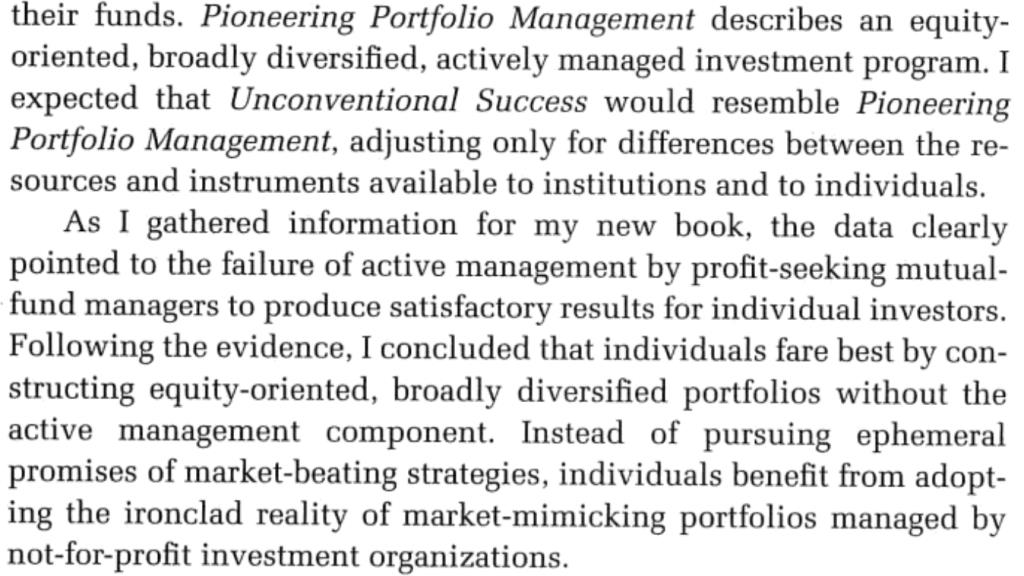<iframe style="width:120px;height:240px;" marginwidth="0" marginheight="0" scrolling="no" frameborder="0" src="//ws-na.amazon-adsystem.com/widgets/q?ServiceVersion=20070822&OneJS=1&Operation=GetAdHtml&MarketPlace=US&source=ss&ref=as_ss_li_til&ad_type=product_link&tracking_id=peaceinvesting-20&language=en_US&marketplace=amazon®ion=US&placement=0060555661&asins=0060555661&linkId=80f8e3b229e4b6fdde8abb238ddd5f6e&show_border=true&link_opens_in_new_window=true"></iframe>|<iframe style="width:120px;height:240px;" marginwidth="0" marginheight="0" scrolling="no" frameborder="0" src="//ws-na.amazon-adsystem.com/widgets/q?ServiceVersion=20070822&OneJS=1&Operation=GetAdHtml&MarketPlace=US&source=ss&ref=as_ss_li_til&ad_type=product_link&tracking_id=peaceinvesting-20&language=en_US&marketplace=amazon®ion=US&placement=1119404509&asins=1119404509&linkId=0beba130446bb217ea2d9cfdcf3b846b&show_border=true&link_opens_in_new_window=true"></iframe>|<iframe style="width:120px;height:240px;" marginwidth="0" marginheight="0" scrolling="no" frameborder="0" src="//ws-na.amazon-adsystem.com/widgets/q?ServiceVersion=20070822&OneJS=1&Operation=GetAdHtml&MarketPlace=US&source=ss&ref=as_ss_li_til&ad_type=product_link&tracking_id=peaceinvesting-20&language=en_US&marketplace=amazon®ion=US&placement=1119376629&asins=1119376629&linkId=2f1e6ff64e783437104d091faaedfec7&show_border=true&link_opens_in_new_window=true"></iframe>

By Bill Martin, Guest Writer
Yale’s $42 billion endowment has the reputation of being one of the best-performing investment portfolios in American higher education. The success of the Yale endowment has led many tax-exempt investors, such as pension plans and foundations (as well as taxable high net worth individuals), to consider emulating the so-called Yale Model.
The primary characteristics of the Yale Model are:
- Broad diversification across asset classes
- Low allocations to assets with low expected returns, such as fixed income and commodities
- High allocations to illiquid assets such as hedge funds, private equity, private real estate, and venture capital
Should physicians try to mimic Yale’s investment strategy? Not exactly, as physicians face one important difference from Yale—doctors pay taxes.
This reality raises an interesting question: What would Yale’s endowment do differently if it were taxable?
A paper published in the Financial Analysts Journal sought to answer that question. The study concludes that if Yale paid taxes, it would alter its investment allocations by:
- Eliminating active equity managers and hedge funds
- Reducing allocations to private equity and real estate
- Increasing the percentage in tax-managed equity and tax-free bonds
Below is a further breakdown of the study’s findings along with Earned Wealth’s insights on how they can apply to wealth creation and preservation for today’s physicians.
Finding 1 – Overweight Tax-Efficient Assets
Accounting for taxes in optimizing an asset allocation drives funds from asset classes that are less tax-efficient to those that are more tax-efficient.
What this means: Investments in tax-inefficient investments—such as hedge funds, actively managed equity, taxable bonds, and real estate—should be used sparingly in portfolios of taxable investors.
Why it matters to physicians: Investments that generate substantial short-term capital gains and income are taxed at higher ordinary income rates than investments that generate long-term capital gains that are taxed at the lower capital gains rate. Physicians typically already pay a lot in taxes. Their investment holdings shouldn’t further exacerbate this drag on their net worth.
Finding 2 – Offset Gains by Harvesting Losses
A tax-efficient asset class that can harvest losses to offset capital gains plays a special role in a taxable asset allocation.
What this means: Equities can assume an important role in portfolios of taxable investors, especially when managed tax-efficiently using technology to systematically harvest losses to offset gains elsewhere in the portfolio. Tax-loss harvesting is an investment strategy that helps preserve the value of an investor’s portfolio over time by strategically selling securities at a loss to offset capital gains taxes from the sale of other securities at a profit.
Investors can use the proceeds of the security sold at a loss to buy a similar investment, maintaining the portfolio’s overall balance. This approach creates the potential for huge tax savings over time while reducing portfolio risk. Research indicates that 100–200 basis points in tax savings can be achieved each year through a process that intelligently and systematically harvests portfolio losses.
Why it matters to physicians: Physicians may generate capital gains from a number of sources, including from their investment portfolios and from the sale of other assets such as commercial real estate and their medical practice. By actively harvesting losses in their taxable investment accounts, this creates a “bank” of losses that can be tapped into in subsequent tax years until they are fully utilized.
Finding 3 – Leverage Custom Indexing
Tax-efficient equity is preferred to indexed or active equity in an after-tax allocation.
What this means: Actively managed equity—and even index funds—are not as tax-efficient as an investment strategy known as custom indexing. This tax-efficient equity strategy invests in select stocks to track the risk and return profile of a specific index such as the S&P 500 Index*. With custom indexing, aka direct indexing, investors can directly own all—or a subset of the underlying securities—of an index. This allows investors and their advisors to be in control of when gains and losses are recognized through direct ownership of the underlying securities.
Furthermore, custom indexing provides more opportunities for tax-loss harvesting. These opportunities to save on taxes arise because certain underlying stocks of the tracked index may be trading at a loss even if the overall index has posted a gain. Since ETFs and mutual funds are traded in baskets of securities rather than by their underlying holdings, tax-loss harvesting is limited for these pooled investment vehicles. Conversely, custom indexing holds more securities that inherently have more variability than a single investment position of a fund. The raw number of securities mathematically creates more opportunities to harvest losses with custom indexing.

Why it matters to physicians: Because of better control and more opportunities for tax-loss harvesting, custom indexing may generate better after-tax performance than comparable ETFs, mutual funds, and market indices. According to a study published in the CFA Journal, tax-loss harvesting can generate 108 basis points (1.08%) of annual tax savings. Such savings compounded over multiple years can translate into significant additional after-tax wealth for physicians over their careers.
Finding 4 – Consider an Allocation to Private Investments
There is a natural place in an after-tax asset allocation to private investments, taxable bonds, and real estate as long as two conditions are satisfied.
First, the allocation must include a tax-efficient class that harvests capital losses—offsetting gains elsewhere in the portfolio.
Second, tax-inefficient assets must provide sufficient diversification.
What this means: A majority of Yale’s assets are allocated to private equity, real estate, hedge funds, and tax-inefficient assets. However, when adjusting for taxes, an optimal allocation to these investments is often lower for taxable investors than the Yale Model. For individual investors, some exposure to these types of investments may be appropriate, especially if custom indexing and tax-loss harvesting are deployed.
Investors often favor private investments because, while not very liquid, they'll presumably result in larger returns. For instance, venture capital funds, private equity, and (for the most part) hedge funds are equity investments. Investors cannot frequently trade these funds, so their liquidity is restricted.
The benefit of forgoing this liquidity is often true for real estate, too. The dynamics of privately owned properties differ from those of publicly traded real estate investment trusts (REITs), which often highly correlate to the return and risk characteristics of small value company stocks.
Besides the potential of enhancing returns and diversification, private investments open up a much broader investment opportunity set. Of the largest 185,000 companies in the US, fewer than 2% of these are publicly traded. The remaining 98%+ are privately held enterprises.
Why it matters to physicians: On average, private equity returns have exceeded public equities by 4.3% per year. Over 30 years, this could turn into a $2.6 million advantage for every $1 million invested in this asset class. To access private investments, physicians must meet certain qualifications, namely around minimum income and asset thresholds.
The Bottom Line
The overarching principle of the Yale Model—maximizing diversification within reasonable bounds—is highly relevant to tax-exempt investors such as endowments, foundations, and pension funds. Notably, economist Harry Markowitz won a Nobel Prize for illustrating the advantages of this strategy of including assets with less-than-perfect correlations.
Physicians can also pursue many of the benefits of the Yale Model, but they must take into account the significant impact of taxes and make smart adjustments accordingly.
So, what would Yale do if it were taxable? A world-class investor like Yale would integrate tax considerations into every aspect of its investment decision-making process, including proactively overweighting tax-efficient investments like custom indexing, systematically harvesting losses to offset gains, and having some exposure to private investments.
[Founder's Note from Dr. Jim Dahle: David Swensen, the man behind the “Yale Model,” wrote two books about investing. The first was called Pioneering Portfolio Management and discussed the Yale Model, as Bill has explained. It was aimed at professional portfolio managers. He then decided he was going to write a book for the investing masses, a book that was eventually titled Unconventional Success (which Amazon tells me I bought on December 31, 2006). He expected that book to discuss the same style of investing. However, as he researched and began to write the book, he realized that it was not possible for the average investor to invest in the same way as the Yale endowment, due to a lack of access to the few talented active managers.

Unconventional Success basically ended up recommending a “Boglehead-style” index fund portfolio to the personal investor. The case was built less on tax issues (although that played into it) and more on a lack of access to alternatives such as timber. Access to alternatives has increased dramatically since the book was written, although there are still issues there for the average investor that an endowment doesn't face, such as tax issues. ]
Is the Yale Model applicable to you as an investor? How else would Yale have to change its strategy if it had to pay taxes? Comment below!
[Editor's Note: Bill Martin is a leading expert on financial wellness, having been the Chief Investment Officer of INTRUST Bank and overseeing $7 billion in assets for physicians, entrepreneurs, high net worth families, and corporations prior to joining Earned as Chief Wealth Officer. Earned is a paid advertiser and a WCI Recommended Financial Advisors partner. However, this is not a sponsored post. This article was submitted and approved according to our Guest Post Policy.]
*The S&P 500 Index is an unmanaged index containing common stocks of 500 industrial, transportation, utility, and financial companies, regarded as generally representative of the US stock market. The index reflects the reinvestment of dividends, if any, and capital gain distributions, if any, but does not reflect fees, brokerage commissions, or other expenses of investing. This index is used for comparison purposes. It is not possible to invest in an index.
General Disclaimer
This communication contains general information that is not suitable for everyone and was prepared for informational purposes only. Nothing contained herein should be construed as a solicitation to buy or sell any security or as an offer to provide investment advice. All examples are for illustrative purposes only and may not be relied upon for investment decisions.
Nothing contained herein should be construed as legal or tax advice and is not intended to replace the advice of a qualified tax advisor or legal professional.
Investing involves market risk, including possible loss of principal and investment objectives are not guaranteed.
Earned Wealth is a registered investment adviser. For additional information about Earned Wealth, including its services and fees, send for the firm’s disclosure brochure using the contact information contained herein or visit https://adviserinfo.sec.gov.
The post Unlocking the Secrets of Yale’s Investment Success for Physicians appeared first on The White Coat Investor - Investing & Personal Finance for Doctors.
||
----------------------------
By: Lauren O'Brien
Title: Unlocking the Secrets of Yale’s Investment Success for Physicians
Sourced From: www.whitecoatinvestor.com/applying-yales-investment-success-for-physicians/
Published Date: Tue, 07 Nov 2023 07:30:50 +0000
Read More
.png) InvestingStocksToolsClubsVideosPrivacy PolicyTerms And Conditions
InvestingStocksToolsClubsVideosPrivacy PolicyTerms And Conditions
